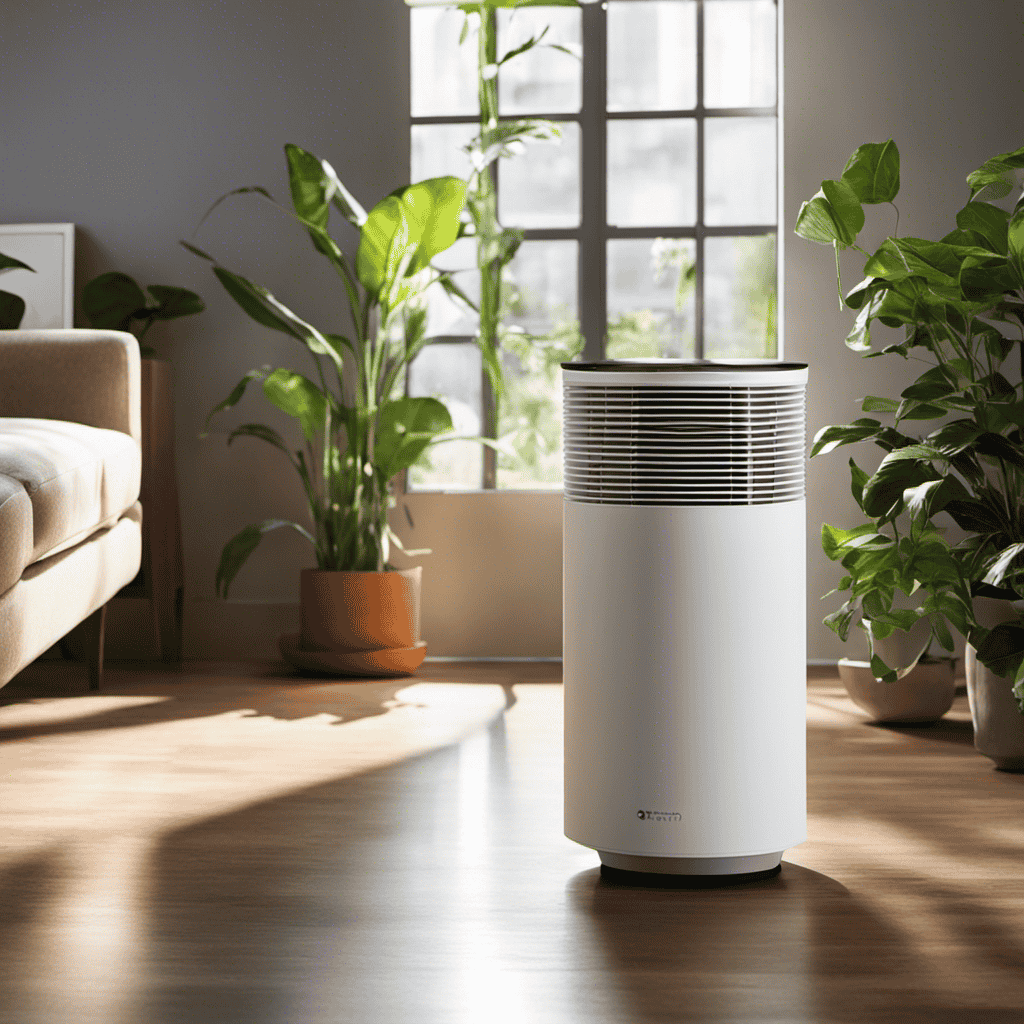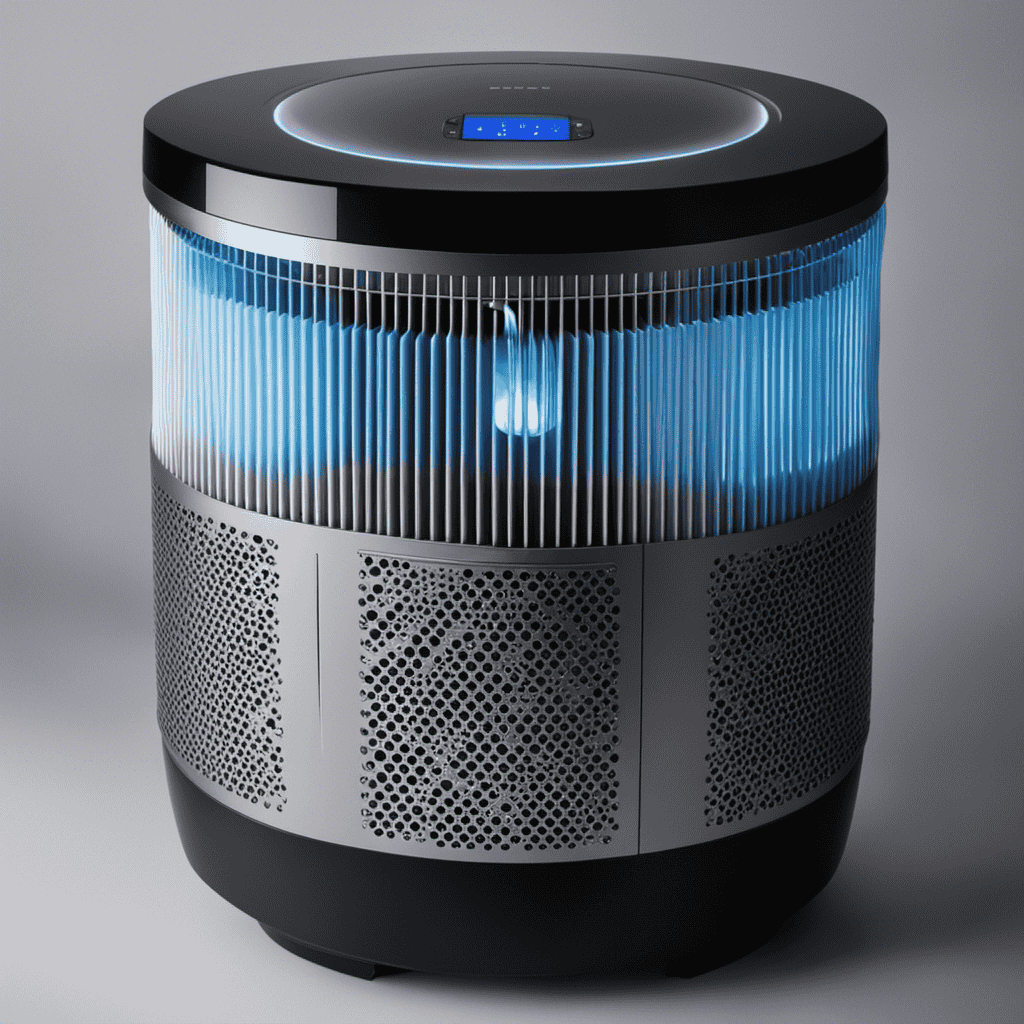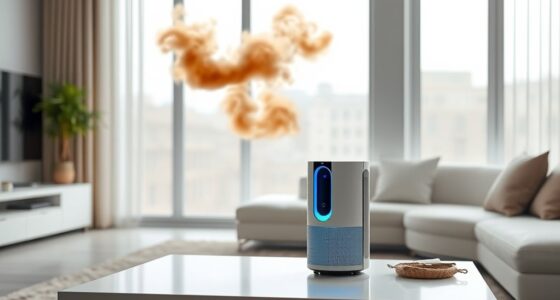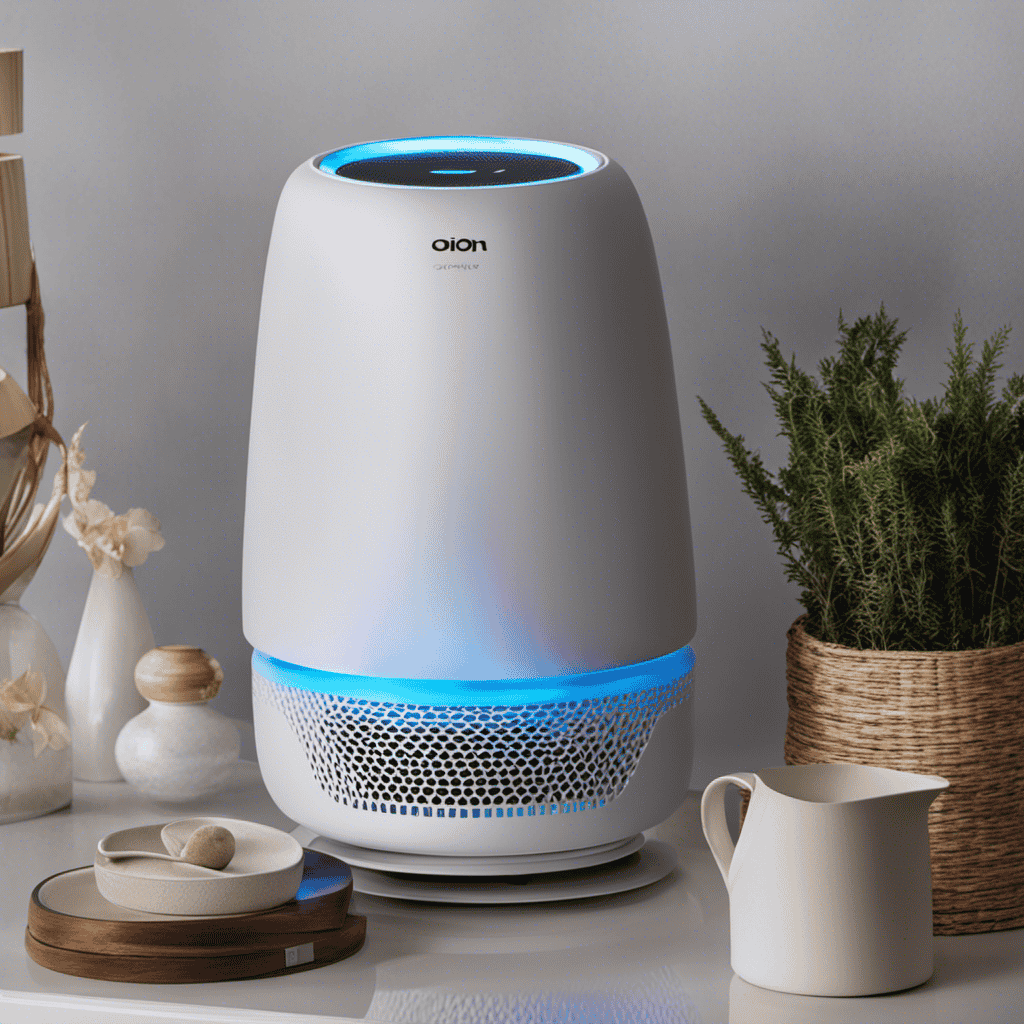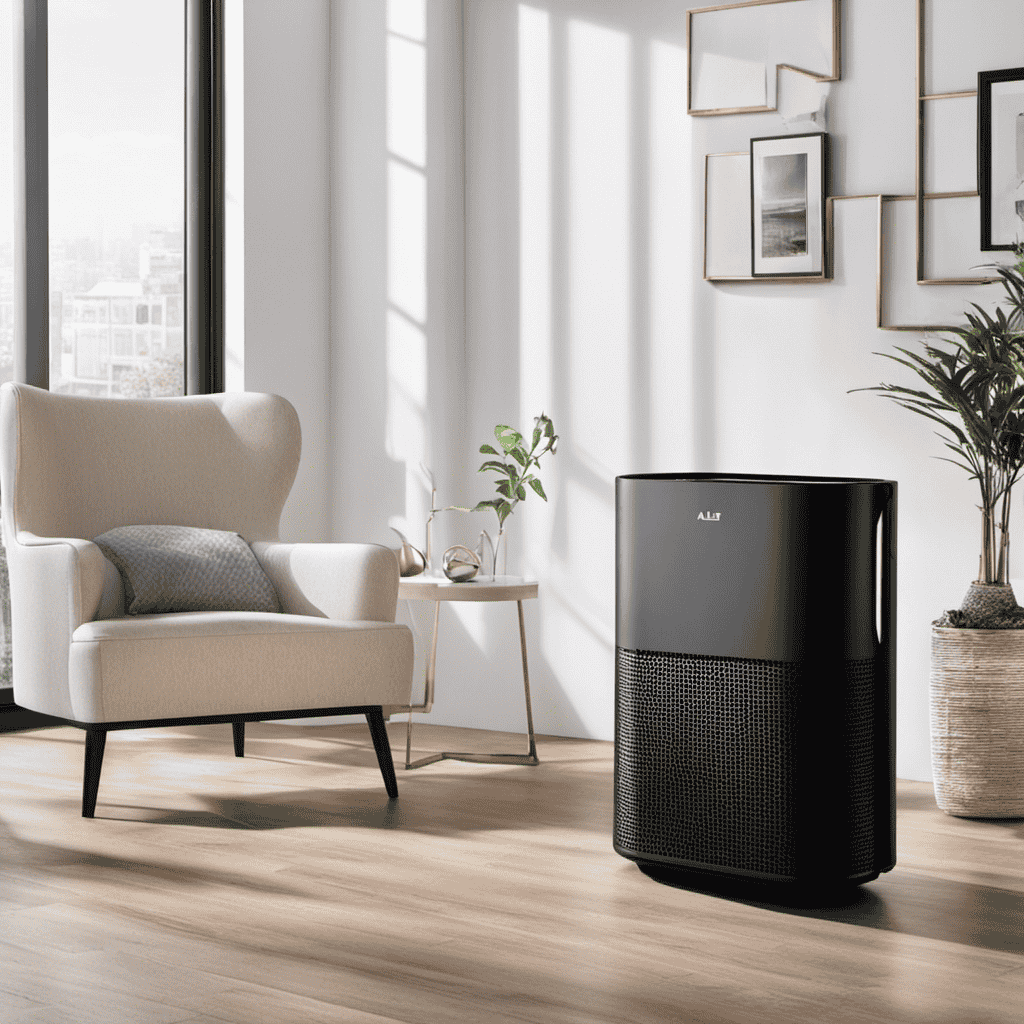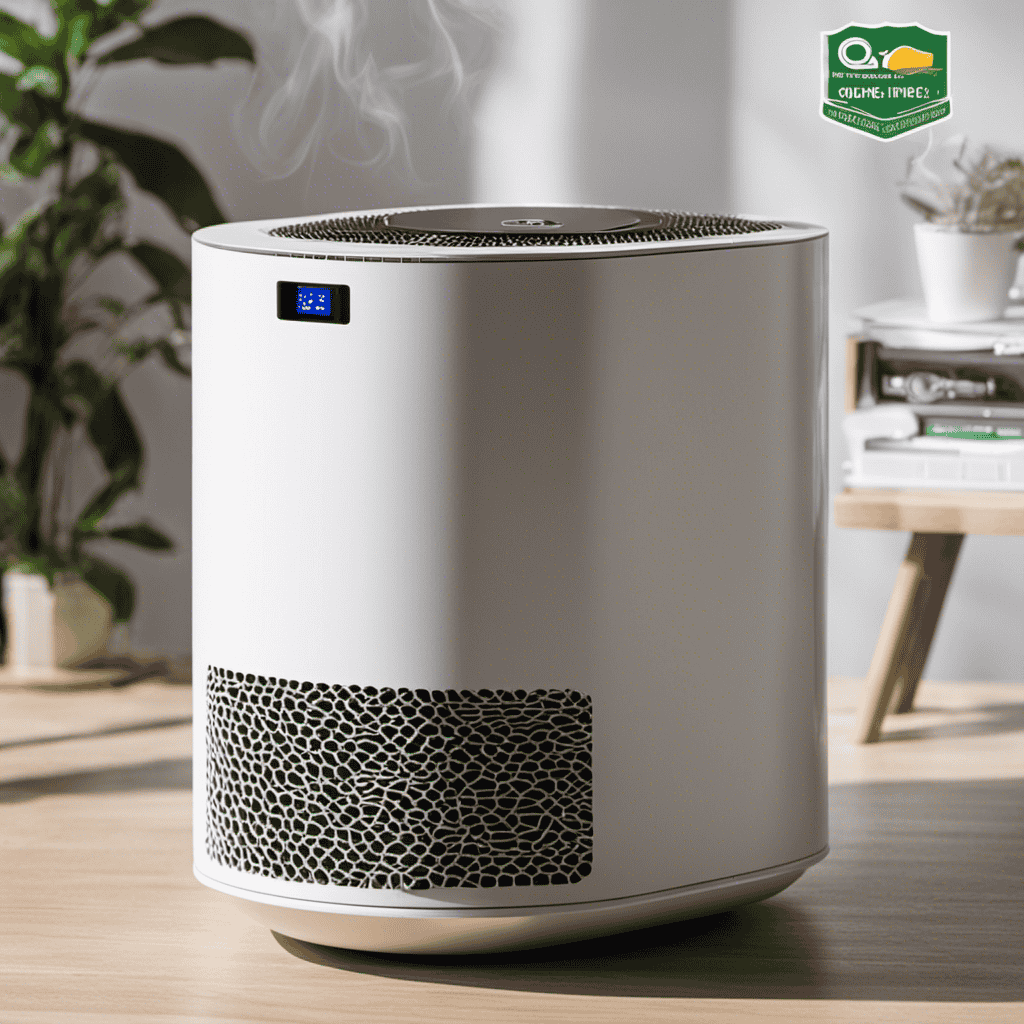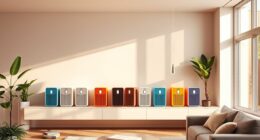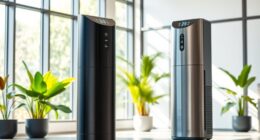So, you have an air purifier but it’s not meeting your expectations? Don’t worry, I’ve got you covered. In this article, I will demonstrate how to enhance the efficiency of your air purifier.
We’ll dive into understanding efficiency ratings, choosing the right purifier for your space, and even upgrading its filtration system.
Plus, I’ll share tips on optimal placement and enhancing air circulation.
Get ready to breathe cleaner air with these simple yet effective strategies.
Key Takeaways
- Look for the CADR (Clean Air Delivery Rate) label on the packaging to determine the effectiveness of an air purifier.
- Consider the size of the room when selecting an air purifier to ensure it is designed for the appropriate square footage.
- Properly place the air purifier at least 6 inches away from walls and 3 to 5 feet from the floor for maximum air purification.
- Regularly clean and maintain your air purifier to ensure optimal performance and effectiveness.
Understanding Air Purifier Efficiency Ratings
To understand air purifier efficiency ratings, you should look for the CADR (Clean Air Delivery Rate) label on the packaging. This rating is crucial in determining the effectiveness of an air purifier in improving indoor air quality.
Thanks to advancements in air purifier technology, these devices have become highly efficient in reducing allergens and other airborne pollutants. Air purifiers work by trapping particles in a filter or through other innovative technologies such as electrostatic precipitation or UV-C light.
By removing these allergens from the air, air purifiers can greatly benefit individuals who suffer from allergies. They can help reduce symptoms like sneezing, coughing, and watery eyes, providing relief and improving overall well-being.
Choosing the Right Air Purifier for Your Space
Choosing the right air purifier for your space can greatly improve indoor air quality. When selecting an air purifier, it’s important to consider the size of the room and the specific air quality concerns you have.
The room size is crucial because air purifiers are designed to effectively clean the air within a certain square footage. If your room is too large for the purifier’s capacity, it won’t be able to adequately filter the air. On the other hand, if the purifier is too powerful for a small room, it may end up wasting energy.
Additionally, consider the specific air quality concerns you have. Different air purifiers are designed to target different pollutants, such as dust, pet dander, pollen, or smoke.
Optimal Placement for Maximum Air Purification
When placing your air purifier, ensure it is positioned in an area with proper air circulation. This is crucial for improving air quality and reducing indoor pollutants effectively.
Here are three key considerations for optimal placement:
-
Distance from walls: Place the air purifier at least 6 inches away from walls to allow for unrestricted airflow. This prevents the buildup of stagnant air and ensures maximum filtration efficiency.
-
Height placement: Position the air purifier at a height of about 3 to 5 feet from the floor. This allows it to capture airborne pollutants more effectively, as they tend to settle closer to the ground.
-
Central location: Ideally, place the air purifier in a central location within the room to ensure even distribution of clean air. This helps eliminate pollutants from all corners and maintains consistent air quality throughout the space.
Regularly Cleaning and Maintaining Your Air Purifier
Regularly cleaning and maintaining your air purifier is essential for optimal performance and long-term effectiveness.
To improve performance, start by removing and cleaning the pre-filter. This can be done by gently vacuuming or rinsing it with water and allowing it to dry completely before reattaching it.
Next, clean the HEPA filter according to the manufacturer’s instructions. This may involve vacuuming or washing the filter, or replacing it altogether.
Additionally, it is important to clean the fan blades and housing regularly to remove any dust or debris that may accumulate.
Troubleshooting common issues can be done by checking for any loose connections or clogged filters. If the air purifier is not functioning properly, it may be necessary to consult the user manual or contact customer support for further assistance.
Upgrading Your Air Purifier’s Filtration System
If you want to improve your air purifier’s filtration system, consider upgrading to a model with a higher quality HEPA filter. Here are three reasons why upgrading your air purifier’s filtration system can significantly improve its performance and increase its effectiveness:
-
Enhanced Filtration Efficiency: A higher quality HEPA filter can capture a greater number of airborne particles, including allergens, dust, pet dander, and mold spores. This increased filtration efficiency ensures cleaner and healthier air in your home.
-
Longer Lifespan: Upgrading to a model with a higher quality filter can also extend the lifespan of your air purifier. With better filtration, the filter will be less likely to get clogged and require frequent replacements, saving you time and money in the long run.
-
Better Air Quality Monitoring: Some advanced air purifiers with upgraded filtration systems come with built-in air quality sensors. These sensors can detect the level of pollutants in the air and automatically adjust the filtration speed accordingly, ensuring optimal purification at all times.
By upgrading your air purifier’s filtration system, you can significantly improve its performance and increase its effectiveness in providing clean and fresh air for your home.
Now, let’s explore how enhancing air circulation can further enhance the purification process.
Enhancing Air Circulation for Better Purification
After upgrading your air purifier’s filtration system, the next step in making it more efficient is to enhance air circulation for better purification. One way to achieve this is by improving ventilation in your indoor space. Proper ventilation helps in maintaining a constant flow of fresh air and prevents the buildup of contaminants. You can achieve this by opening windows and doors, using fans or exhaust systems, and ensuring that air vents are clean and unobstructed.
Additionally, utilizing air purifier accessories can help improve air circulation. Accessories such as air purifier fans or air deflectors can help distribute purified air more effectively throughout the room. These accessories can be easily attached to your existing air purifier and can make a significant difference in the overall efficiency of the unit.
By enhancing air circulation and utilizing air purifier accessories, you can maximize the effectiveness of your air purifier in removing pollutants and providing cleaner air for your indoor environment.
In the next section, we will discuss the benefits of supplementing your air purifier with natural air cleaning methods.
Supplementing Your Air Purifier With Natural Air Cleaning Methods
To enhance the effectiveness of your air purifier, consider incorporating natural air cleaning methods into your indoor environment. Here are three ways to do it:
-
Using essential oils: Adding a few drops of essential oils to your air purifier can help freshen the air and neutralize odors. Look for oils like lavender, eucalyptus, or tea tree, which have natural antimicrobial properties.
-
Incorporating houseplants: Plants are not only aesthetically pleasing but also act as natural air purifiers. They absorb carbon dioxide and release oxygen while filtering out toxins like formaldehyde and benzene. Spider plants, peace lilies, and snake plants are excellent choices for improving indoor air quality.
-
Opening windows: Letting fresh air in from outside can help flush out indoor pollutants. Even a few minutes of ventilation can make a significant difference in air quality.
Frequently Asked Questions
Can I Use My Air Purifier in a Small Enclosed Space, Such as a Closet or Bathroom?
Yes, you can use an air purifier in a small enclosed space like a closet or bathroom. However, there are pros and cons. It’s important to consider the size of the space and the purifier’s capacity for efficient air cleaning.
How Often Should I Replace the Filters in My Air Purifier?
I replace the filters in my air purifier regularly to maintain its efficiency. It’s important to clean the exterior as well. I also use it at night for continuous clean air.
Can I Use Multiple Air Purifiers in the Same Room for Better Efficiency?
Using multiple air purifiers in a large room can enhance efficiency by covering more space and increasing airflow. However, it’s important not to overuse them, as this can strain the units and decrease their effectiveness.
Are There Any Specific Air Purifiers Suitable for People With Allergies or Asthma?
As someone with allergies and asthma, I’ve found that the best air purifiers for these conditions are ones that have HEPA filters and activated carbon filters. These purifiers effectively remove allergens and irritants from the air, improving indoor air quality.
Can I Use Essential Oils or Fragrance Additives With My Air Purifier?
Yes, you can use essential oils or fragrance additives with your air purifier. However, it’s important to consider their effectiveness and safety. Some oils may clog the filters or release harmful chemicals.
Conclusion
In conclusion, optimizing the efficiency of your air purifier is crucial for maintaining clean and healthy indoor air. By understanding air purifier efficiency ratings, selecting the right purifier for your space, placing it strategically, and regularly cleaning and maintaining it, you can ensure maximum purification.
Additionally, upgrading the filtration system, enhancing air circulation, and supplementing with natural air cleaning methods can further enhance the effectiveness of your air purifier.
Did you know that indoor air can be up to 5 times more polluted than outdoor air? Taking steps to improve air purification is essential for the well-being of you and your family.
